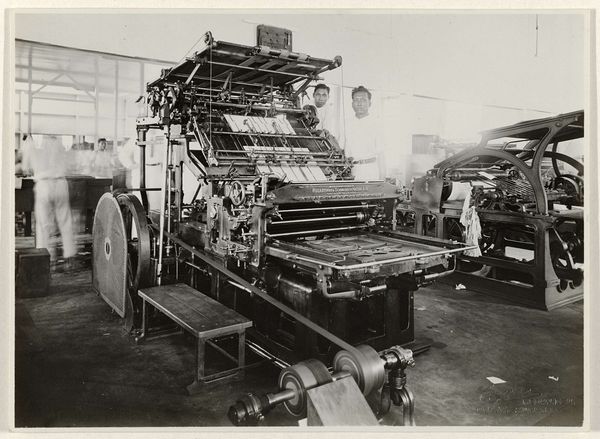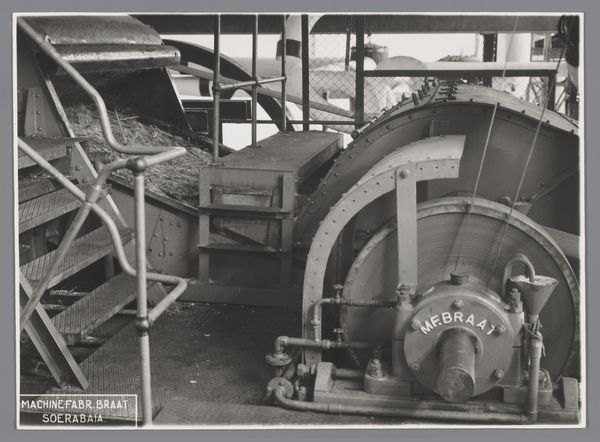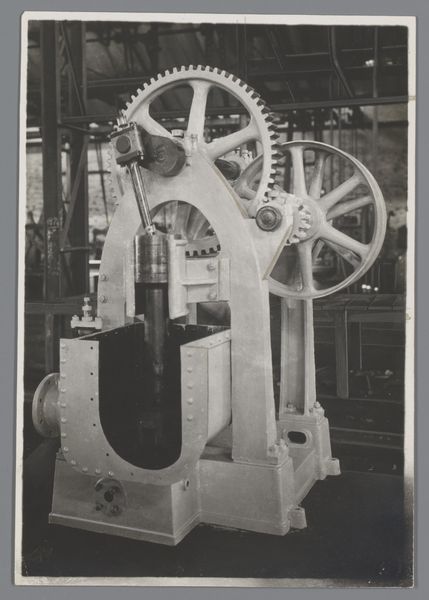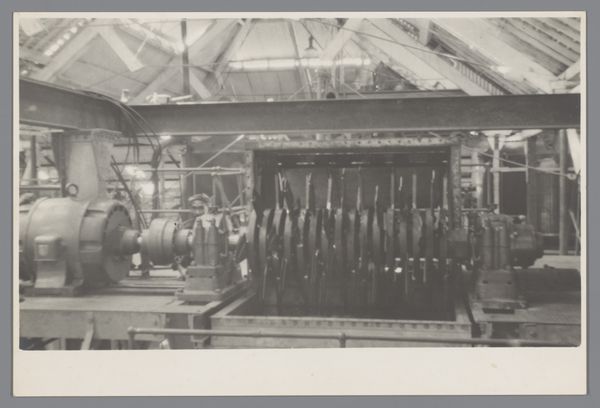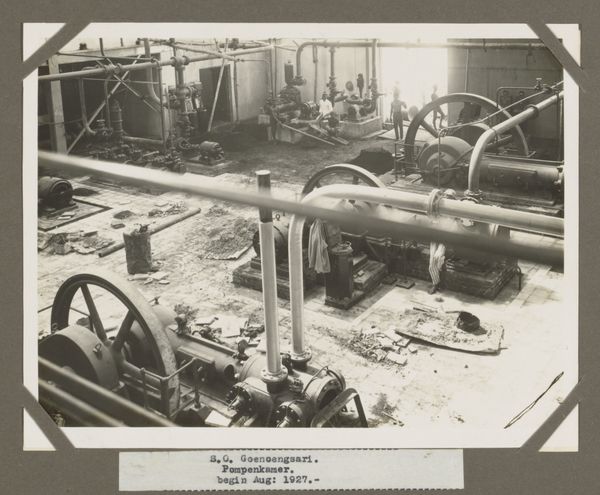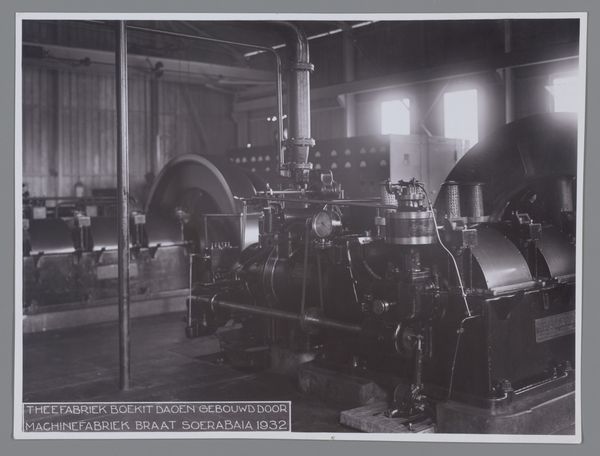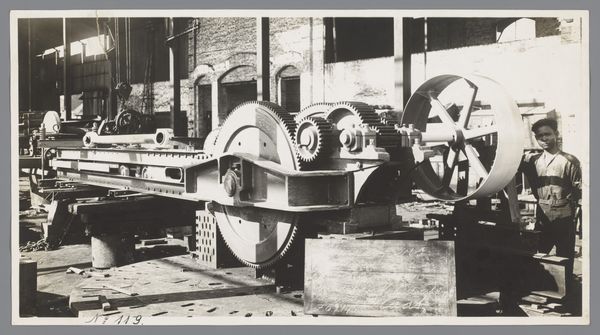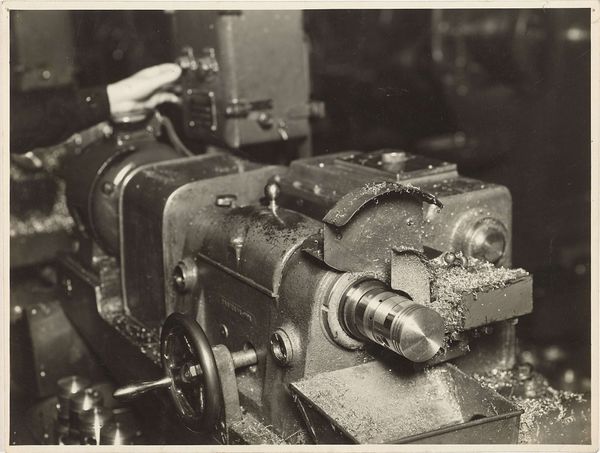
photography
#
still-life-photography
#
photography
#
modernism
Dimensions: height 177 mm, width 235 mm
Copyright: Rijks Museum: Open Domain
Curator: This photograph, dated 1927-1928, is titled "S.O. Goenoengsari. Sweetlandfilterpers. begin Aug: 1927." It is an anonymous work housed here at the Rijksmuseum. Editor: It has an incredible starkness; an array of industrial mechanisms is densely presented. A powerful and imposing visual document. Curator: Indeed. Given its title, the machinery shown here is undoubtedly part of a sugar refinery – 'S.O.' likely signifying Sugar Organization, ‘Goenoengsari’ a sugar plantation area, and the Sweetland filter press, the central filtration device. Its compelling from a material perspective: metal, mechanics, and the tangible process of industrial production. Editor: What strikes me is its evocation of a very specific historical context – the modernization of Indonesian sugar production in the late colonial period. These processing plants became both a driver of the economy, a physical manifestation of imperial control, and something the local population would have been forced to come to terms with. It's very cold though, very detached. Curator: Exactly. The anonymity adds another layer. Who documented this? A worker? An engineer? Their access and viewpoint would have dramatically influenced its tone, and it highlights how easily a material like photography documents the labor-intensive aspects of manufacture without necessarily crediting the workers responsible for it. Editor: Precisely. Consider the image's public role. Was it intended as a celebration of modernity, showcasing Dutch engineering prowess? Or did it carry other socio-political messages intended for different audiences? It feels to me like we are intruding into some colonial, highly industrialized, setting. Curator: It truly forces one to question what story is missing by not knowing the hand behind it. In short, it highlights an incredibly mechanized scene during a volatile socio-economic period. Editor: Yes, this glimpse of an early, and powerful manufacturing age, provokes thoughts about societal change during an intense, but uncredited historical moment.
Comments
No comments
Be the first to comment and join the conversation on the ultimate creative platform.
